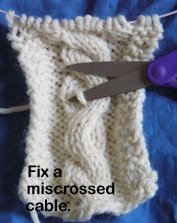.
After lunch we visited parts of the Museum of the American Indian that reflect cultures south of the border.
Incense burners from Bolivia.
Inca medicine spoon. 1450-1532 CE.
Inca (1450-1532 CE). I'm not sure I've seen fringe done in stripes in this way.
The other thing that caught my eye about this is that it's knitted. Knitting must have been unvented many times, in many places......
My very favorite knitting guru,
Elizabeth Zimmerman, described her innovative ideas and techniques as
"unvented," as in "unearthed". She believed that knitting has been
around for so long that every technique has been used before, and when
we come up with something new to us, we are re-finding something that
others have used before us.
I'm not sure I was aware cotton was native to the Americas.
Apparently cotton is very old (like from Gondwana, 200 million years ago?), as it seems to grow everywhere (without human help for transportation!). Wikipedia: "The plant is a shrub native to tropical
and subtropical regions around the world, including the Americas,
Africa, and India. The greatest diversity of wild cotton species is found in Mexico, followed by Australia and Africa."
"Ball of cotton, with metal weaving tools." 1450-1550 CE. Peru
Everything I've learned about early human states has indicated that in order for there to be states, there has to be accounting, which precedes writing.
This is a khipu -- a textile way to keep track of ... stuff. Inka. Nazca, Peru. Cotton and agave fiber. 1400-1600 CE. (This is more than a yard, from side to side.)
(At some point in our tour through the museum, Inca became Inka. I don't know the significance of this.)
(I never saw a mention of the function of color or fiber content, but those differences could certainly be used to keep track of *which* stuff was counted.....)
(I'm not seeing the "position" distinction as rigidly adhered to above as the description below would indicate....)
Inka Arybalo. "This distinctively shaped Inka vessel is a symbol of the inka Empire. Arybalos are found in every territory that the Inka conquered, with regional variations in decoration. The largest one was use to store chicha (corn beer)."
Interesting that this shape was so common -- it can't sit flat. It needs to sit in sand, or in a ring of some sort.....
And then we moseyed next door to Air and Space. Our plan was to stay there until most people left. It had been so nice in Natural History after 5:00 on the 28th. Our plan was that this would happen at Air and Space on the 29th.
Unfortunately, our plan was foiled. They were having some sort of shindig in Air and Space, so we were all kicked out at 5:00.
Air and Space is the busiest museum on the planet, they say. In any case, I can report that it is mobbed in July. We had less than an hour in the museum, so we wandered here and there, trying to avoid the worst of the hordes.
All of this stuff in the main-entry lobby must be labeled, but I didn't see any labels. I was struck by the propeller on the wall, more than half as wide as the aircraft above it.
I would have said I took more pictures than this one, but I'm not finding them on my storage devices.
Ah well.
Like the National Zoo, Air and Space has another huge facility that is not within Washington, DC.
I would have loved to be on the Mall the day Discovery was flown over the Mall, and would have loved to be at the larger not-in-town facility the day it joined Enterprise as part of the Smithsonian.....
We have been kicked out of Air and Space so the .01% could enjoy it.
The Capitol.
The National Gallery of Art.
.
Subscribe to:
Post Comments (Atom)



































No comments:
Post a Comment